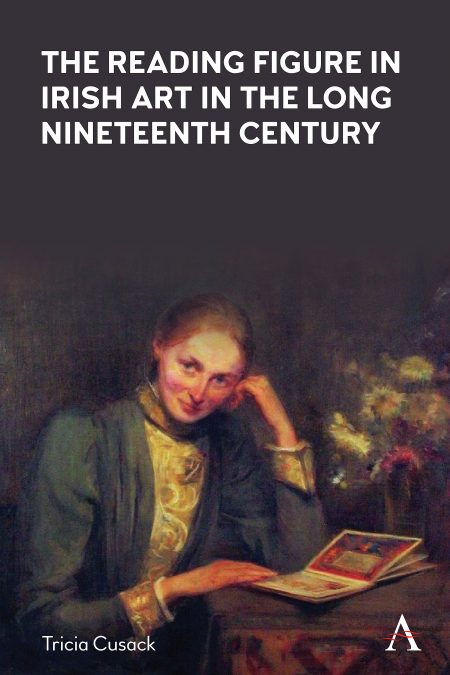Robert Louis Stevenson, Literary Networks and Transatlantic Publishing in the 1890s
The Author Incorporated
Title Details
- ISBN: 9781785272844
- January 2020
- Pages: 242
- Imprint: Anthem Press
‘Robert Louis Stevenson, Literary Networks and Transatlantic Publishing in the 1890s’ focuses on an author characterised by geographical and aesthetic mobility, and on those who worked with him or wrote for him at a period of key changes in transatlantic publishing. Stevenson’s situation in the 1890s, living in Samoa, publishing in Britain and the United States, is both highly specific but also representative of a new literary mobility. Drawing on a range of resources, from archival material, correspondence, biographies, essays and fiction, the book examines the operations of transatlantic literary networks during a period of key changes in transatlantic publishing.
To investigate Stevenson and the geographies of his literary networks during the last years of his life and after his death, the book presents a series of critical case studies profiling figures who worked with Stevenson, negotiated his publications on both sides of the Atlantic, wrote for him or were inspired by him. Each chapter focuses on a figure involved in the production or afterlife of Stevenson’s late fiction. Individuals studied include Stevenson’s boyhood friend and literary negotiator, Charles Baxter; American publisher Scribner’s literary representative in London, Lemuel Bangs; Stevenson’s ‘mentor’, Sidney Colvin; Stevenson’s admirer and posthumous co-author, literary critic Arthur Quiller-Couch; and collaborators among Stevenson’s own family. Through its emphasis on these significant and fascinating figures, instrumental to or imbricated in the dissemination of Stevenson’s writing, the book offers a fresh understanding of his work in the context of transatlantic publishing.
The book deploys the concept of ‘literary prosthetics’ to frame its analysis of gatekeepers, tastemakers, agents, collaborators and authorial surrogates in the transatlantic production of Stevenson’s writing. The complexities of Stevenson’s geographical and literary situation demonstrate the ways in which the permeable bodies of ‘author’, ‘critic’, ‘editor’, ‘publisher’ and ‘agent’ were fixed and refixed during the period. The book contributes to knowledge of transatlantic publishing and literary cultures in the 1890s and to Stevenson studies but its focus on the specifics of Stevenson’s ‘case’ provides a point of entry into larger considerations of literary communities, nineteenth-century mobility drivers of literary production and the nature of the authorial function.
Glenda Norquay is chair in Scottish Literary Studies at Liverpool John Moores University, UK, and head of its Research Institute for Literature and Cultural History. With interests in Robert Louis Stevenson, Scottish literature more generally, women’s fiction and literary reception/production, she is the author of Robert Louis Stevenson and Theories of Reading (2007); editor of the Edinburgh Companion to Scottish Women’s Writing (2012); and co-editor of a volume on archipelagic cultural politics, Across the Margins (2002). Norquay has also written extensively on Scottish women’s fiction and on the politics of suffrage literature.
Acknowledgements; List of Abbreviations; Introduction; 1. Lemuel Bangs: ‘The Senator’; 2. A Tale of Two Texts; 3. ‘A Gentleman Called Charles Baxter’; 4. Sidney Colvin: Custodian and Monument; 5. Family, Friends and Collaborators; 6. Arthur Quiller- Couch: The Quivering Needle; 7. Richard Le Gallienne: ‘Not While a Boy Still Whistles’; Conclusion: Robert Louis Stevenson Incorporated; References; Index.
‘A groundbreaking account of transatlantic publishing and reputation in the 1890s focusing on the uniquely talented, uniquely peripatetic property known as Robert Louis Stevenson, enmeshed in a network of agents, mentors, friends, fans and gatekeepers. Norquay’s invaluable study explores the “incorporation” of the modern author under new concepts of authorship, ownership and commercial competition.’
—Roderick Watson, Professor Emeritus, University of Stirling, UK
‘Glenda Norquay tells a story as surprising and absorbing as any tale of adventure created by Robert Louis Stevenson himself. In her hands, scholarship on late-Victorian publishing history comes to life as a narrative about obsessive love, greedy self-interest, legal machinations, and high-minded dedication to Art (with a capital “A”), all focused on the works that RLS left behind at the time of his premature death. […] This volume offers new points of origin for everything from modern marketing strategies to popular notions of celebrity authorship and fandom. At the same time, the thread running so invitingly throughout is Norquay’s own deep appreciation of RLS and her ability to reawaken interest in novels of his that have wrongly been neglected.’
—Margaret D. Stetz, Mae and Robert Carter Professor of Women’s Studies and Professor of Humanities, Department of Women & Gender Studies, University of Delaware, USA
Related products
-
The Great Illustrators of Edgar Allan Poe
Tony Magistrale, Jessica Slayton
May, 2021
£125.00 / $125.00 -
People, Nations and Traditions in a Comparative Frame
Thinking about the Past with Jonathan Steinberg
Edited by D’Maris Coffman, Harold James, Nicholas Di Liberto
March, 2021
£125.00 / $125.00 -
Raymond Federman and Samuel Beckett
Voices in the Closet
Nathalie Camerlynck
July, 2021
£125.00 / $125.00 -
Creativity and “the Paris Review” Interviews
A Discourse Analysis of Famous Writers' Composing Practices
Ronda Leathers Dively
February, 2022
£125.00 / $125.00 -
The Reading Figure in Irish Art in the Long Nineteenth Century
Tricia Cusack
February, 2022
£125.00 / $125.00 -
Addiction, Representation and the Experimental Novel, 1985–2015
Heath A. Diehl
December, 2020
£125.00 / $125.00








